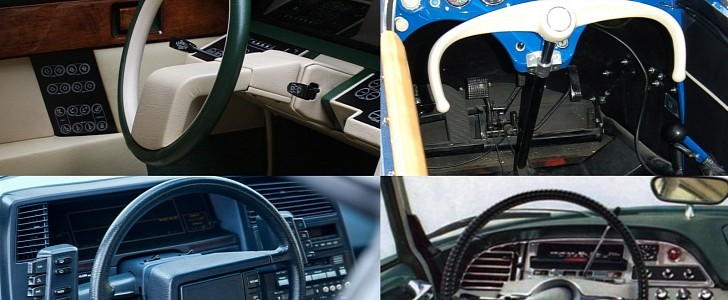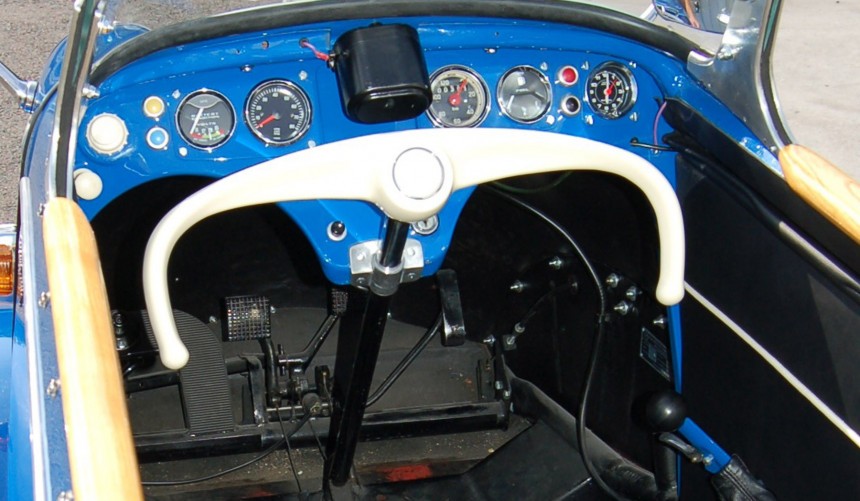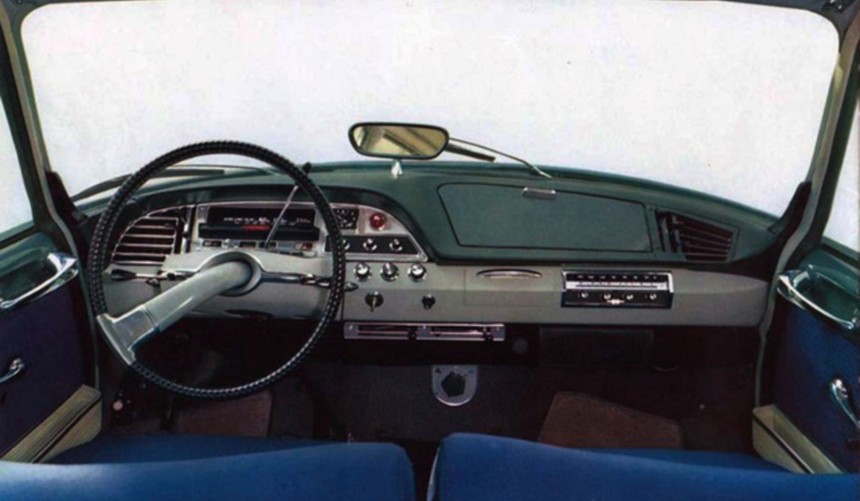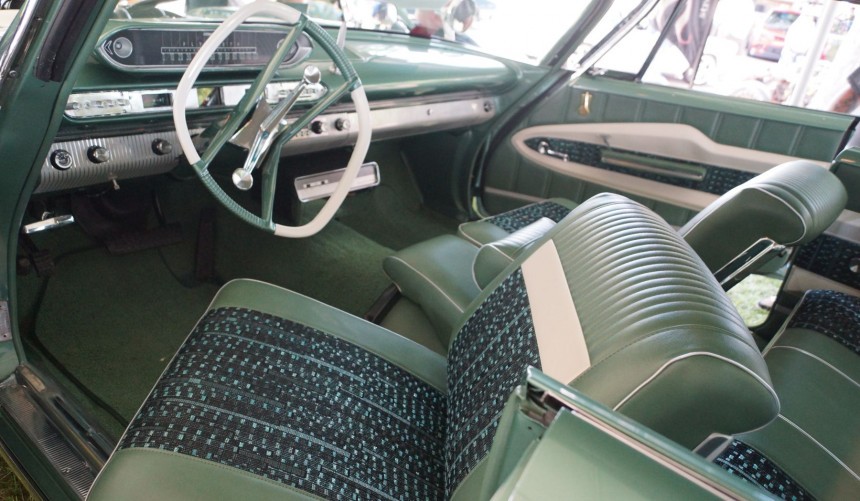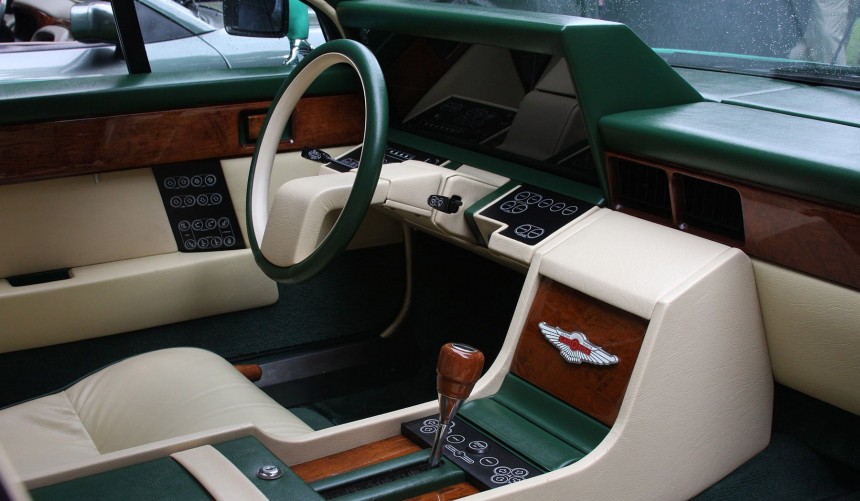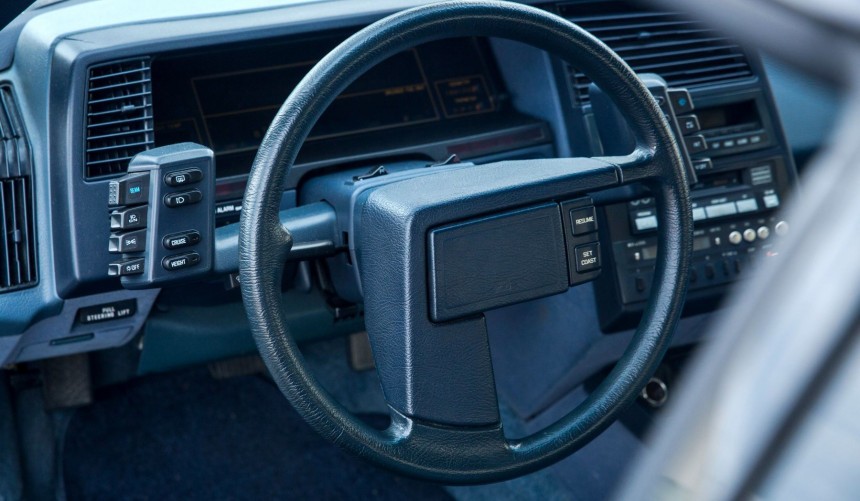Recently, Tesla has revealed the facelifted Model S which also gets a redesigned interior equipped with a yoke-style steering wheel, much to the surprise of everyone. However, the American company is not the first to use an unconventional design on a production car, as we’re about to see in this article.
Similar designs are used by racecars because they provide more legroom, increased visibility, and better feedback, but most everyday vehicles use a conventional, rounded shape because it’s easier to perform maneuvers that require more steering rotation, like a very narrow corner or a parallel park.
In the refreshed Model S, there is no need for a conventional shape because most of the difficult maneuvers like parking will be done automatically. It’s also a precursor of future steering wheels that will only be used occasionally and will probably retract into the dashboard, a feature easier to employ with such a design.
However, Tesla isn’t the first carmaker to use a futuristic design, with many others attempting to reinvent the (steering) wheel over the years on models that had nothing or little to do with motorsport.
It used a similar yoke-style design as the Tesla only that it was more of a steering bar than a wheel since the driver would have to swivel it to steer instead of rotating it.
It was linked directly with the track rods of the front wheels which made it extremely responsive, as those who were fortunate to drive one report.
Citroen DS
Another innovative design was the single-spoke found on one of the most innovative cars of all time, the Citroen DS which was produced from 1955 to 1975.
Its futuristic exterior was complemented by the science-fiction interior, but the design of the steering wheel was actually an innovative safety feature.
Before airbags were invented, Citroen designers and engineers had the ingenious idea of using this design to allow the rim to bend more easily in the event of a collision and minimize the risk of a detached spoke piercing the driver’s chest.
The angled and rounded spoke also deflects the body from the steering column extends all the way to the steering wheel.
It was also innovative for its time, featuring a push-button automatic transmission, rotating front seats for easy access, and a Hi-Fi record player.
Nevertheless, the first thing that catches the eye when you get up close is the peculiar steering wheel. More of a design statement than a practical feature, its shape seems to have inspired Chevrolet C8 designers, yet they, unfortunately, omitted the sparkle-infused resin surface of the Fury’s.
Aston Martin Lagonda Series 2
One of the most expensive cars in the world at the time of its release in 1976, the second-generation Lagonda brought a blend of luxury and futuristic technology that blew people’s minds.
It came with touch button controls and a fully digital LCD display instead of conventional gauges, features that are early similar in terms of design to what we find in modern-day vehicles.
However, the steering wheel was nothing like what we see today. It featured a conventional round shape but used a single, wide spoke to increase the visibility of the LCD and provide easy access to the touch buttons fitted behind it.
The car was loaded with features that were uncommon on such smaller cars at the time like a computer-controlled engine and gearbox, air suspension, or a digital instrument cluster (available on turbocharged models).
Inside, the airplane-inspired cabin was fitted with a strange two-spoke steering wheel with both tilt and telescope adjustment. It was only equipped with two cruise control buttons, but the coolest feature was the tilting digital cluster that moved in the same direction as the steering wheel. To complement the aeronautical-themed design, the car was fitted with a joystick-shaped shifter.
In the refreshed Model S, there is no need for a conventional shape because most of the difficult maneuvers like parking will be done automatically. It’s also a precursor of future steering wheels that will only be used occasionally and will probably retract into the dashboard, a feature easier to employ with such a design.
However, Tesla isn’t the first carmaker to use a futuristic design, with many others attempting to reinvent the (steering) wheel over the years on models that had nothing or little to do with motorsport.
Messerschmitt KR200
More of a three-wheeled scooter than an actual car, this cute little thing was designed by aircraft engineer Fritz Fend and produced by German aircraft manufacturer Messerschmitt from 1955 to 1964.It used a similar yoke-style design as the Tesla only that it was more of a steering bar than a wheel since the driver would have to swivel it to steer instead of rotating it.
It was linked directly with the track rods of the front wheels which made it extremely responsive, as those who were fortunate to drive one report.
Another innovative design was the single-spoke found on one of the most innovative cars of all time, the Citroen DS which was produced from 1955 to 1975.
Its futuristic exterior was complemented by the science-fiction interior, but the design of the steering wheel was actually an innovative safety feature.
Before airbags were invented, Citroen designers and engineers had the ingenious idea of using this design to allow the rim to bend more easily in the event of a collision and minimize the risk of a detached spoke piercing the driver’s chest.
The angled and rounded spoke also deflects the body from the steering column extends all the way to the steering wheel.
Plymouth Fury
Back in the 1960s, the car industry was booming in the U.S. and manufacturers were producing some gorgeous cars. Among them is the second-generation Fury that was one of the most eye-catching models out there.It was also innovative for its time, featuring a push-button automatic transmission, rotating front seats for easy access, and a Hi-Fi record player.
Nevertheless, the first thing that catches the eye when you get up close is the peculiar steering wheel. More of a design statement than a practical feature, its shape seems to have inspired Chevrolet C8 designers, yet they, unfortunately, omitted the sparkle-infused resin surface of the Fury’s.
One of the most expensive cars in the world at the time of its release in 1976, the second-generation Lagonda brought a blend of luxury and futuristic technology that blew people’s minds.
It came with touch button controls and a fully digital LCD display instead of conventional gauges, features that are early similar in terms of design to what we find in modern-day vehicles.
However, the steering wheel was nothing like what we see today. It featured a conventional round shape but used a single, wide spoke to increase the visibility of the LCD and provide easy access to the touch buttons fitted behind it.
Subaru XT
Launched in 1985, the XT was an eccentric presence in an otherwise boring Subaru lineup. It used a fresh design with a wedge-shaped front end that reduced drag in order to help the mediocre engines provide a driving experience worthy of the sporty appearance.The car was loaded with features that were uncommon on such smaller cars at the time like a computer-controlled engine and gearbox, air suspension, or a digital instrument cluster (available on turbocharged models).
Inside, the airplane-inspired cabin was fitted with a strange two-spoke steering wheel with both tilt and telescope adjustment. It was only equipped with two cruise control buttons, but the coolest feature was the tilting digital cluster that moved in the same direction as the steering wheel. To complement the aeronautical-themed design, the car was fitted with a joystick-shaped shifter.
